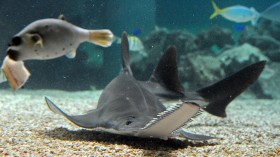You might want to stay out of the beach for now.
A tiny marine pest identified as the sea lice has recently been found in Gulf Coast beaches, mainly along the Florida panhandle.
According to ABC 7, the tiny pests have already been confirmed in Florida's South Walton and Santa Rosa Beaches.
The Florida Department of Public Health said the sea lice--also known as "sunbather's eruption"--have been a problem for those residing near Florida's southern Atlantic coastline as early as eleven years ago. But the lack of research about this resulted in zero improvement since the day it was first identified in the area.
Accounts from the department stated that sea lice are small parasites found in warm waters. They are jellyfish larvae that sting like adult jellyfish. Both belong to Cnidarians, a group of marine animals that contain stinging structures, according to marine biologists at the University of Miami.
The parasite, which is as small as a ground pepper, is visible to the naked eye, but is almost impossible to see when in water. Because of their size, they often get trapped in swimmers' bathing suits. Its fabric can act like a net that captures the organisms.
A person who gets in contact with the sea lice will develop rashes. Some cases, according to CNN, can have severe flu-like symptoms that can last for weeks. For mild cases, rashes can be treated with over-the-counter antihistamines and anti-itch lotions.
Scott Jackson, the Sea Grant extension agent for Bay County, said in an interview with News Herald that no one really knows how long the sea lice will stay in the waters or whether they will spread east to Bay County.
"It depends on environmental conditions," he said.
© 2024 NatureWorldNews.com All rights reserved. Do not reproduce without permission.
![Severe Thunderstorm Alert: Tornadoes, Damaging Winds and Hail Possible from Upper Ohio Valley to Northeast US [NWS]](https://1471793142.rsc.cdn77.org/data/thumbs/full/70161/280/157/50/40/severe-thunderstorm-alert-tornadoes-damaging-winds-and-hail-possible-from-upper-ohio-valley-to-northeast-us-nws.jpg)




